Spotlight on the Collection: Historic Brighton Buildings
In this series, we explore some of the interesting items from Bayside City Council’s Art and Heritage Collection.
In the 1970s, local artist and architect John C Paul undertook a series of watercolours of important historic buildings around the suburb of Brighton to illustrate how the houses used to look when they were first built.
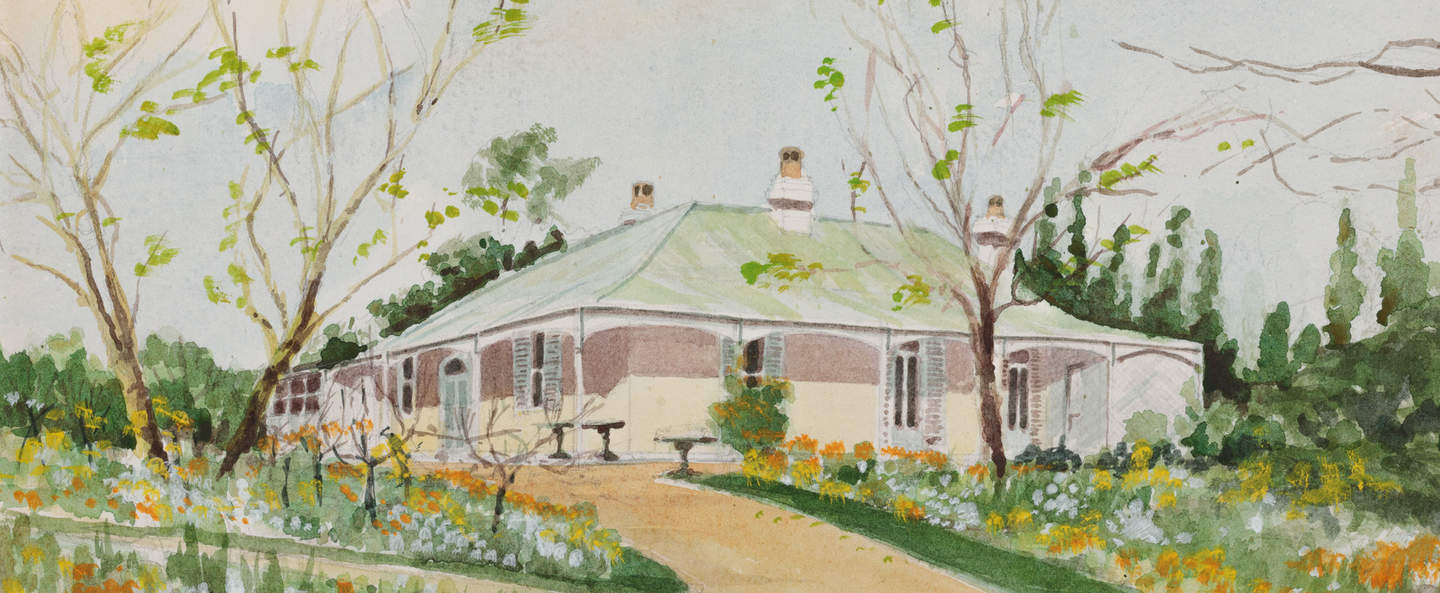
John C Paul, Boort c.1965 (detail) 1975, watercolour, 27.2 x 38.3 cm. Bayside City Council Art and Heritage Collection.
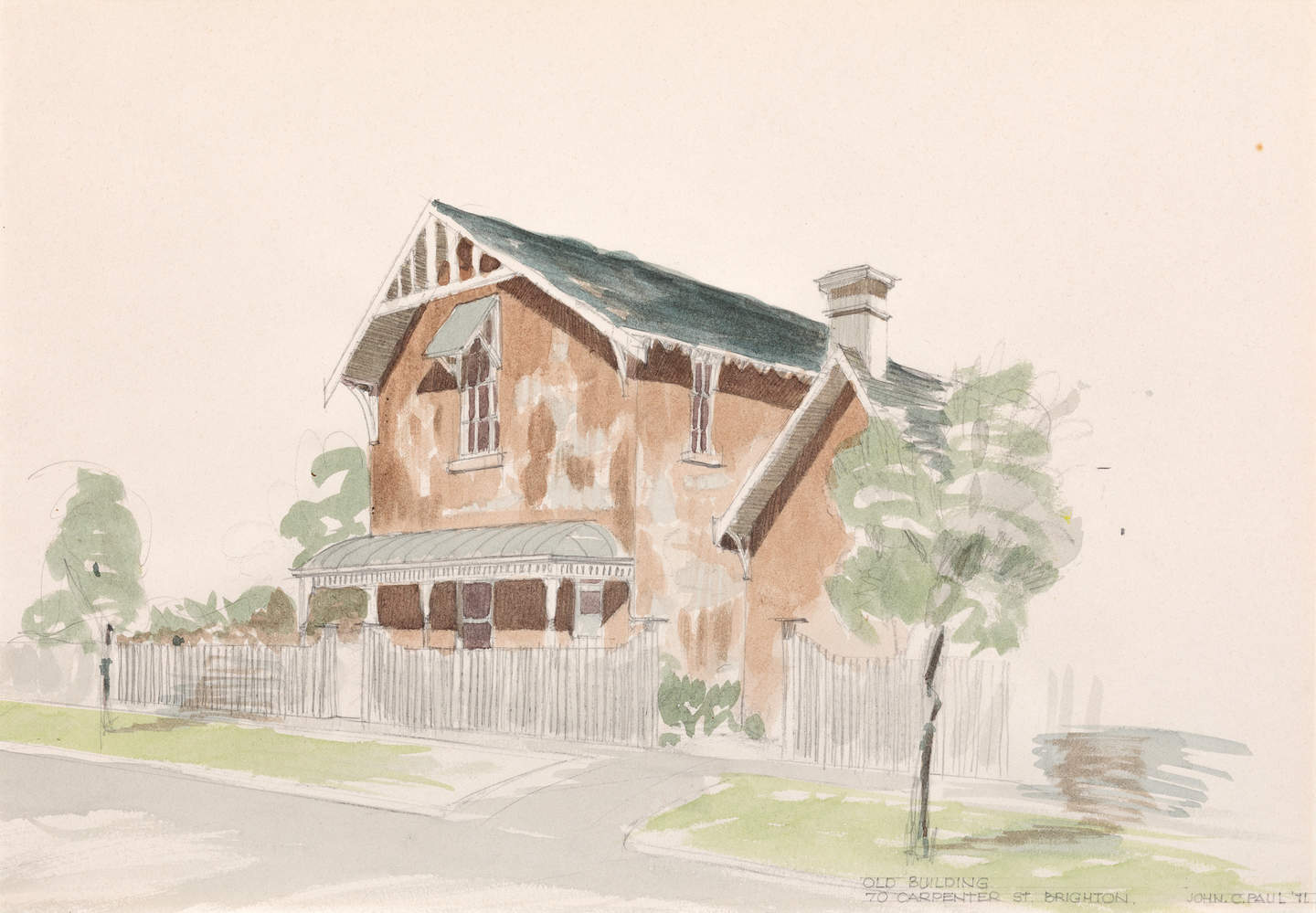
John C Paul, Old Building, 70 Carpenter Street 1971, watercolour, 28.5 x 40.8 cm. Bayside City Council Art and Heritage Collection. Purchased 1974.
John C Paul
John Callum Paul was born in Melbourne in 1912 and was an artist and architect who lived in the area and retired to Point Lonsdale. He studied architecture at Melbourne University and was one of the earliest graduates in the newly opened Faculty of Architecture. He started his own architecture practice and built the Presbyterian churches in Camperdown and Vila and supervised the construction of the new St Andrew’s Church in Brighton. He was a foundation member and third President of the Brighton Historical Society, where he undertook research into the history of local buildings.
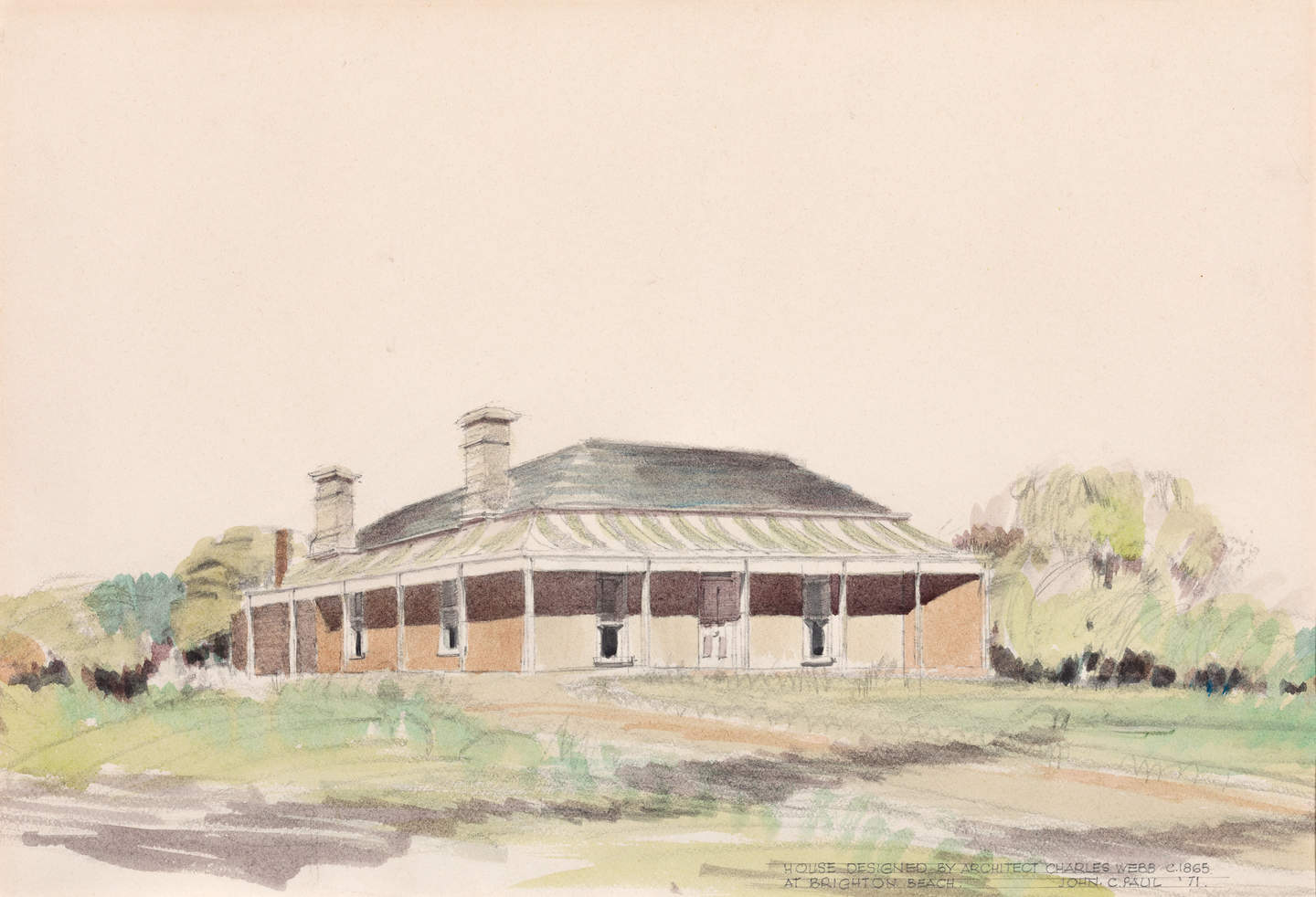
John C Paul, House designed by architect Charles Webb c.1865 1971, watercolour, 29 x 42.2 cm. Bayside City Council Art and Heritage Collection. Purchased 1974.
Historic Brighton
In the 1970s, local artist and architect John C Paul undertook a series of watercolours of important historic buildings around the suburb of Brighton to illustrate how the houses used to look when they were first built. Brighton Council purchased 10 of these works from the artist and they are an important record of the area’s past, showing a number of buildings that have since been demolished.
St Ninian's
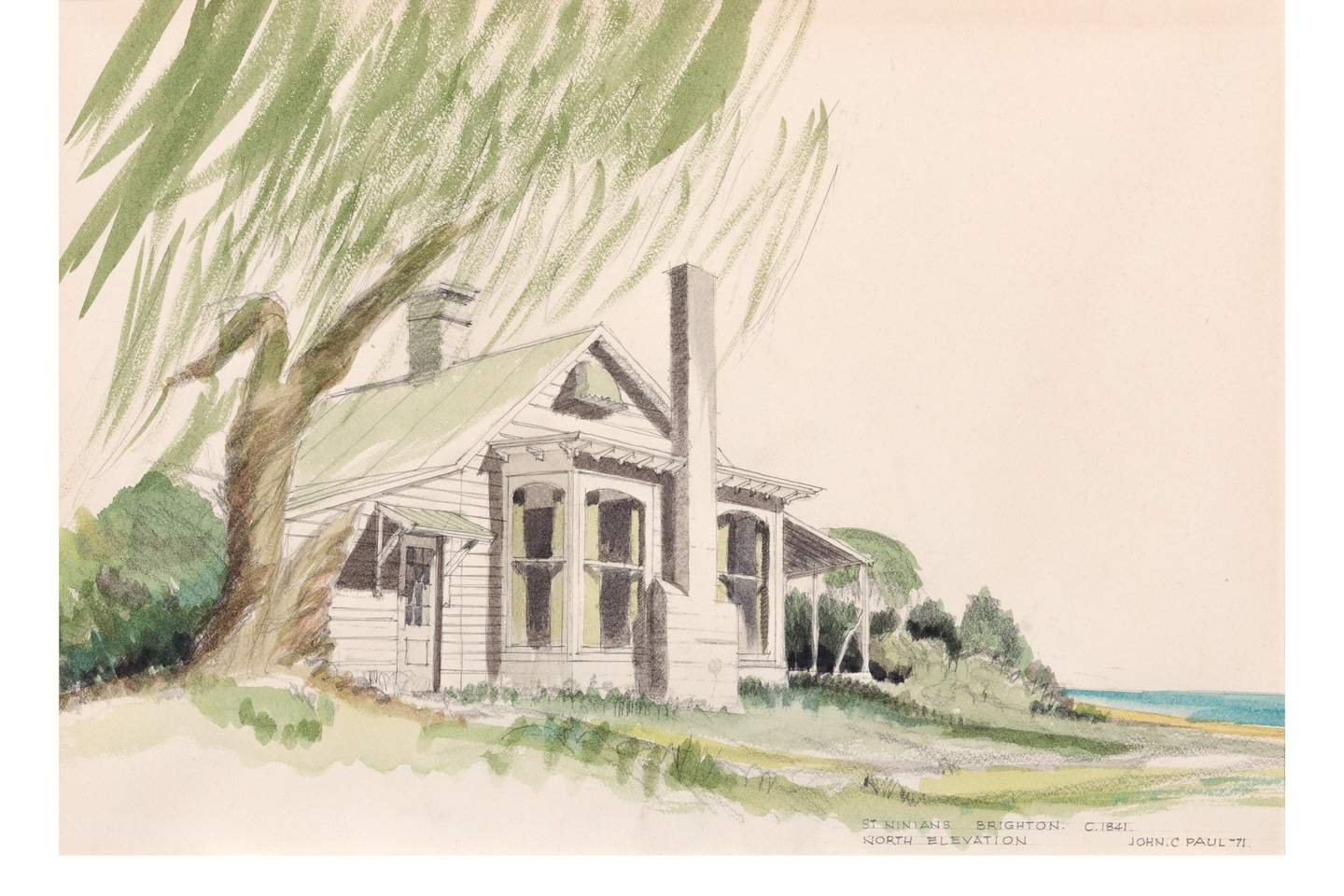
John C. Paul, St.Ninian's north elevation c.1841 (detail) 1971, watercolour, 29.5 x 42.3 cm. Bayside City Council Art and Heritage Collection, purchased 1974.
Built around 1841, St Ninian’s, located at 10 Miller Street, was one of Brighton’s earliest buildings. It is best known as being the home of merchant shipping agent, politician and former British naval officer, George Ward Cole between the 1840s and 1902.
Located on the seafront to the right of Bay Street, St Ninian’s was known for its Singapore Teak wing. It is likely that the original portion of the building was prefabricated in Singapore, an example of the spread of building techniques and house forms across the British Empire, often via sea merchants such as Ward Cole.
The 24-acre property originally consisted of the main house, a detached brick kitchen with servants’ quarters above, a coach house, laundry, an orchard and garden.
During the 1850s, St Ninian’s became a fashionable haunt for many important social identities who shaped Melbourne’s history. Victoria’s first royal visitor, Prince Alfred, the Duke of Edinburgh, was a guest here in 1867. The property was demolished in 1974.
Learn more about George Ward Cole
St Andrew's Church
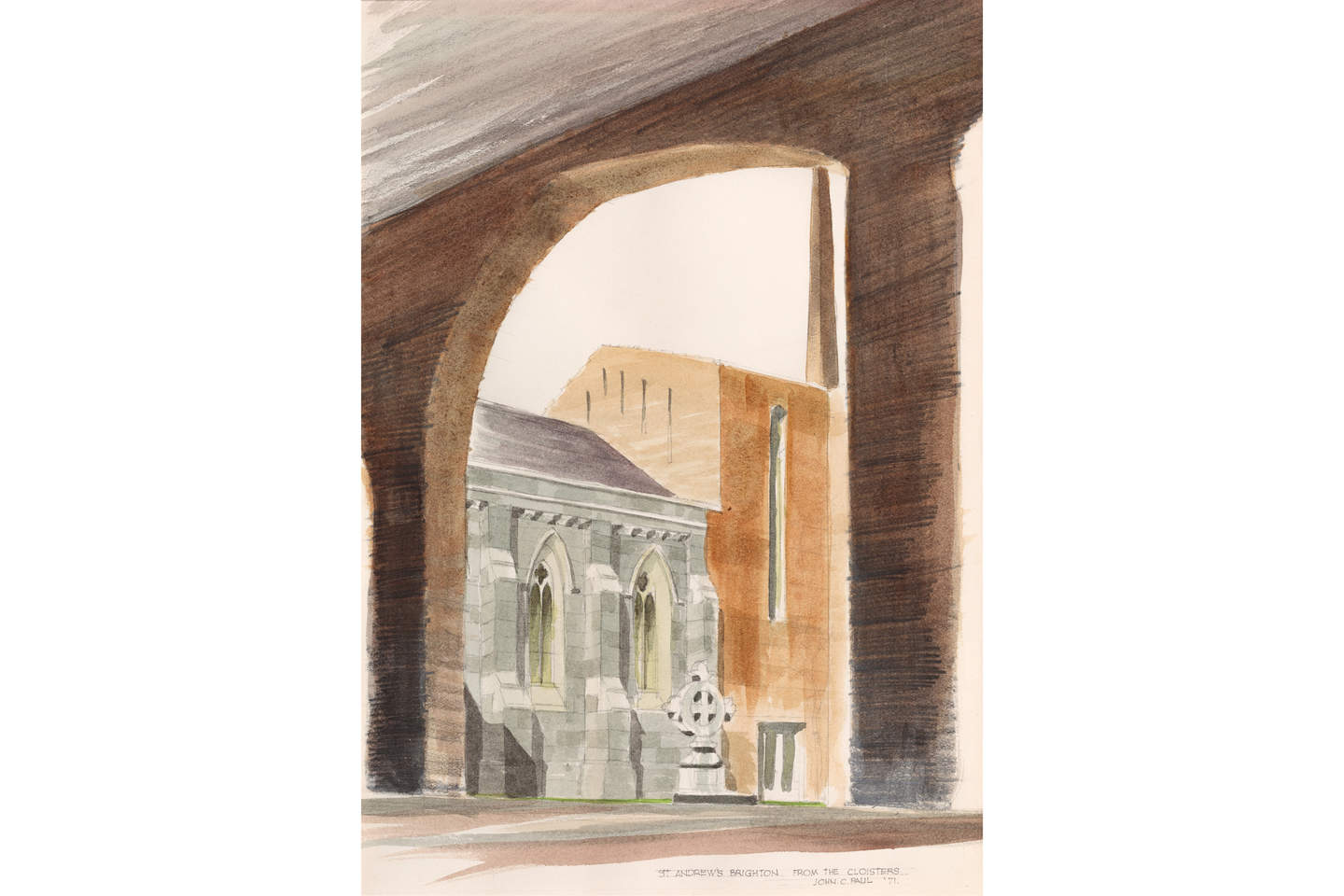
John C Paul, St Andrew's Brighton 1971, watercolour, 44 x 30.5 cm. Bayside City Council Art and Heritage Collection. Purchased 1974.
St Andrew’s Anglican Church, located at 228 New St, Brighton, is the oldest continuous Anglican Church in Victoria. Opened on St Andrew's Day in 1842, it was one of the earliest Christian churches established in the Port Phillip District.
A second church building was erected on the site in 1851, followed by a third building and schoolhouse in 1857 which was enlarged in 1886. A fire in 1961 engulfed the building and renowned Australian church architect Louis Williams was appointed to design the new building.
The present church complex is amongst the largest church buildings in Australasia. Using over 500,000 bricks and over 16,000 roof tiles, this versatile space consisted of three major conjoined areas: the main church building, the Pioneer Chapel and the Lady Chapel. The large arcaded cloister, seen in this painting, with an internal cloister garden, is extremely rare in any church in Australasia, and links the Pioneer Chapel to the narthex of the new building.
Boort
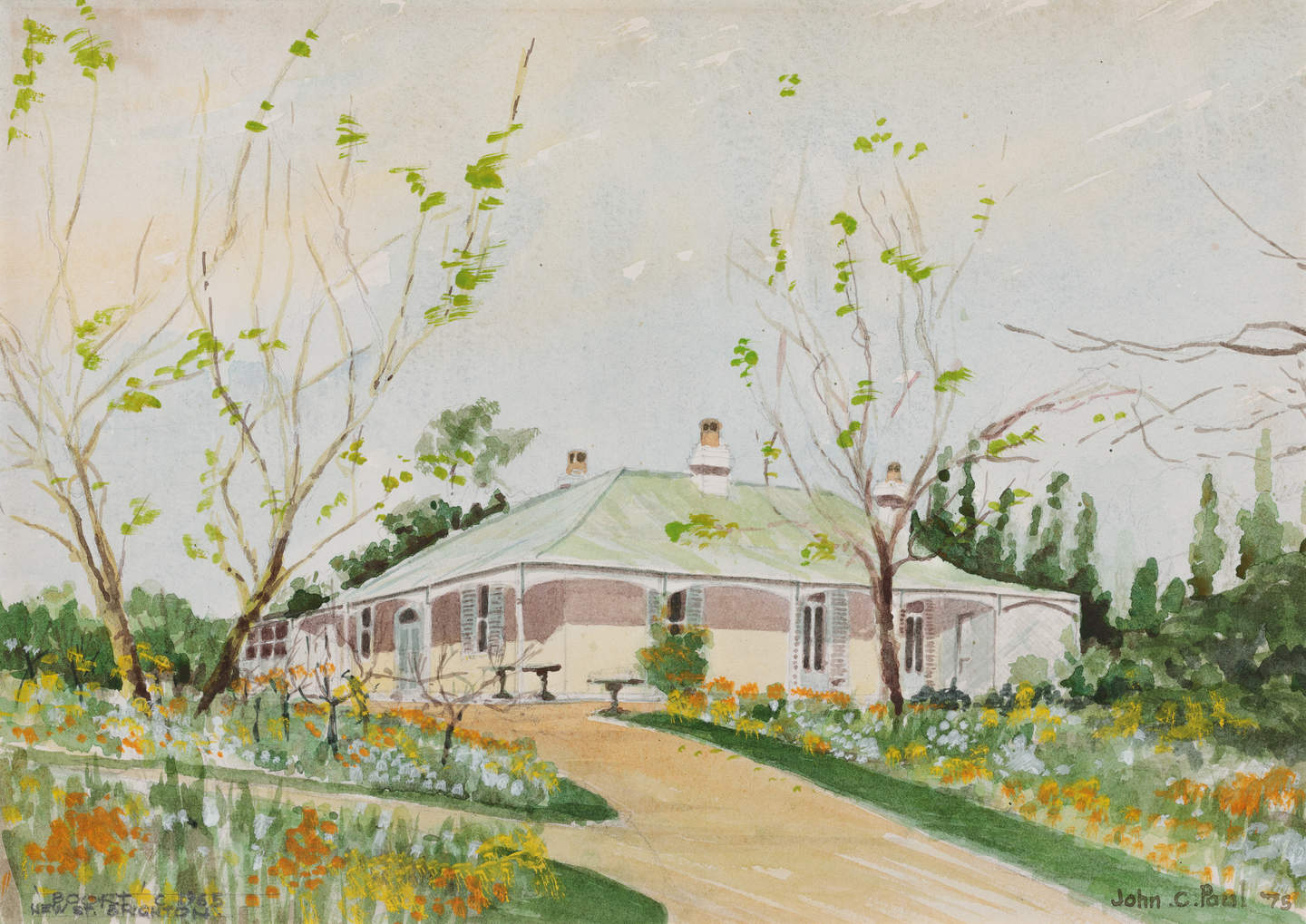
John C Paul, Boort c.1965 1975, watercolour, 27.2 x 38.3 cm. Bayside City Council Art and Heritage Collection.
Originally built around 1869, the residential house Boort, which was located at 266 New Street, Brighton was sold to Brighton Grammar in 1968 and was subsequently demolished in 1974.
Adam Lindsay Gordon cottage
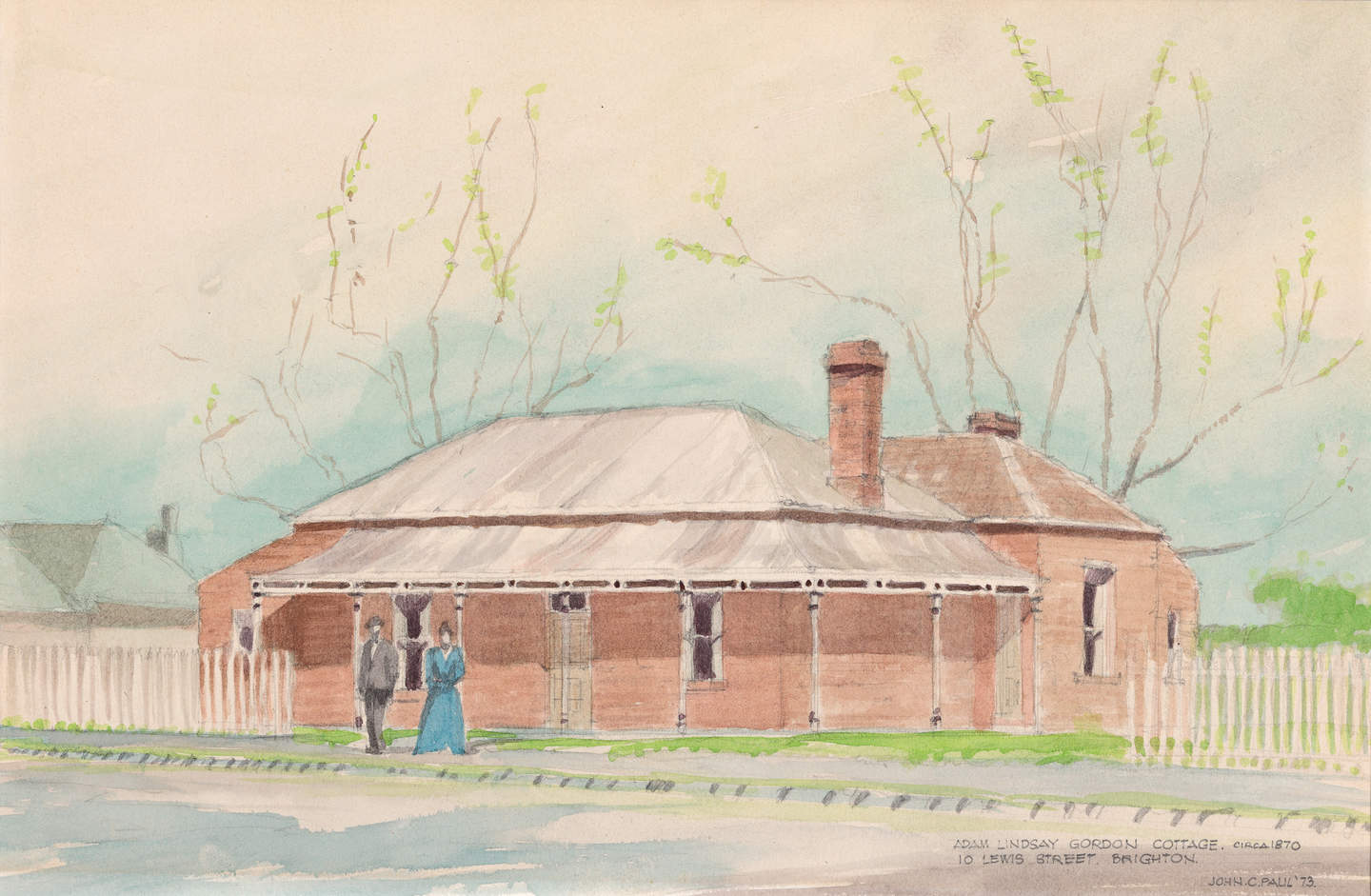
John C Paul, Adam Lindsay Gordon cottage c.1870 1973, watercolour, 27.8 x 42.3 cm. Bayside City Council Art and Heritage Collection. Purchased 1974.
The famous Australian poet Adam Lindsay Gordon (1833-1870) lodged for 17 months in this cottage, located at 10 Lewis Street, Brighton. He and his wife Margaret lived here from 1869 until Gordon took his life on the Brighton foreshore in June 1870.
Adam Gordon Lindsay was the first Australian poet to gain considerable recognition overseas and has been credited for beginning a national school of Australian poetry. His poetry reflected his love of the bush and a sense of humour, but also his battle with depression. In addition to being a poet, Lindsay was also a skilled horseman, police officer and politician.
In 1946, the cottage at 10 Lewis Street was demolished. Local poet Mr Cyril Good, an ardent admirer of Adam Lindsay Gordon, purchased the bricks from the cottage which he carefully numbered and stored for a number of decades, in the hope that it would one day be re-erected in Gordon’s honour. He campaigned for many years for the local government to rebuild the cottage, and during the 1960s and 70s the Brighton Historical Society put a lot of energy into fundraising to continue the cause. After Cyril Goode’s death, the bricks from the Lewis Street cottage were taken to Ron Rado’s amusement park Gumbaya World, where they remain to this day.
Prince Albert Hotel
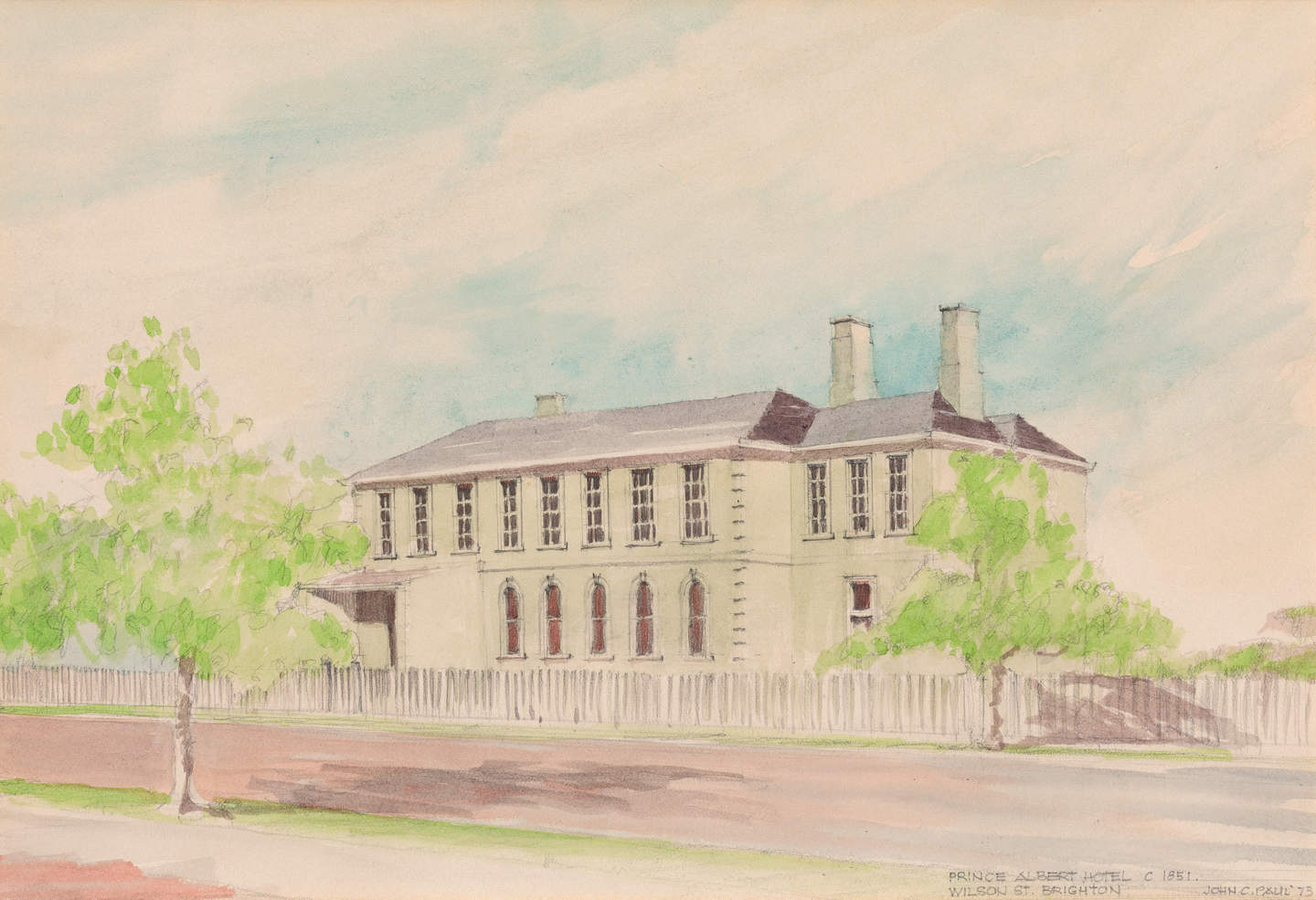
John C Paul, Prince Albert Hotel c.1851 1973, watercolour, 28 x 40.9 cm. Bayside City Council Art and Heritage Collection. Purchased 1974.
The Prince Albert Hotel in Wilson Street, Brighton was built as a hotel in the 1850s. However the owner could not obtain the necessary licence and it became a coaching House for Cobb & Co. The building was demolished in 1971.
Interested in learning more about the Art and Heritage Collection?
Bayside City Council is the custodian of the Bayside Art and Heritage Collection, a collection of around 2,000 items that was principally formed when the former Sandringham and Brighton City Councils merged in 1994. Artworks and heritage objects are displayed at our Corporate Centre in Sandringham, Bayside Gallery in Brighton and other Council owned buildings.
Do you want to know what's on in Bayside?
Subscribe to the Bayside Arts e-newsletter and you'll receive the latest news, public program information and invites to exhibition openings.